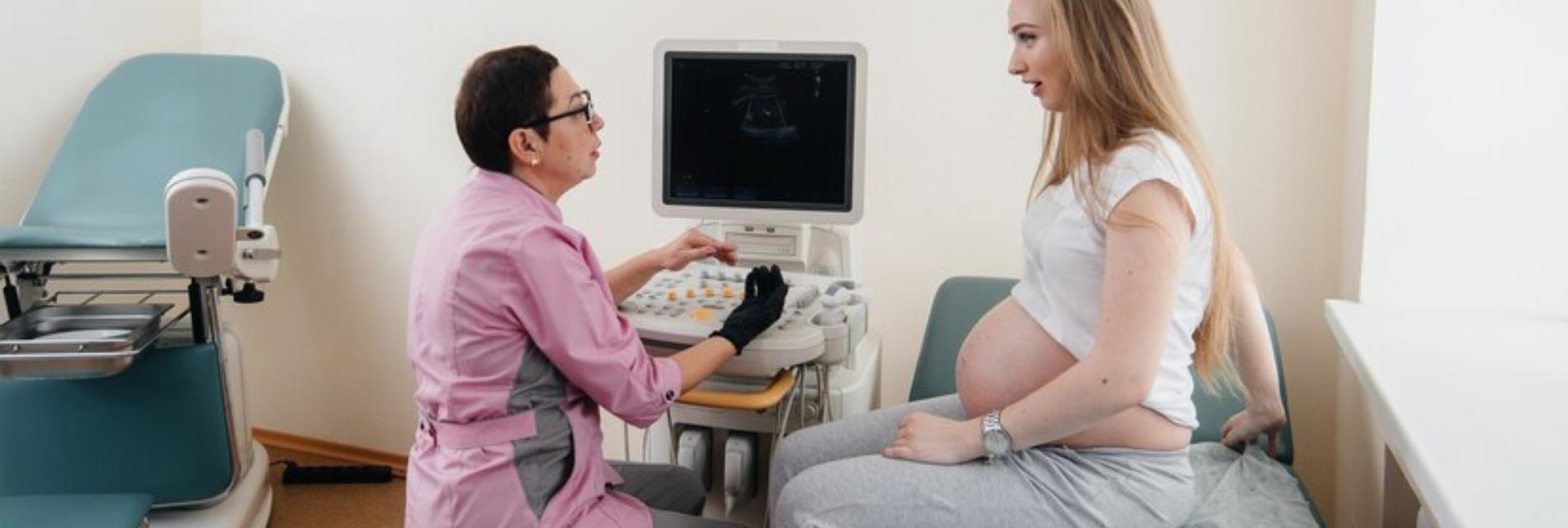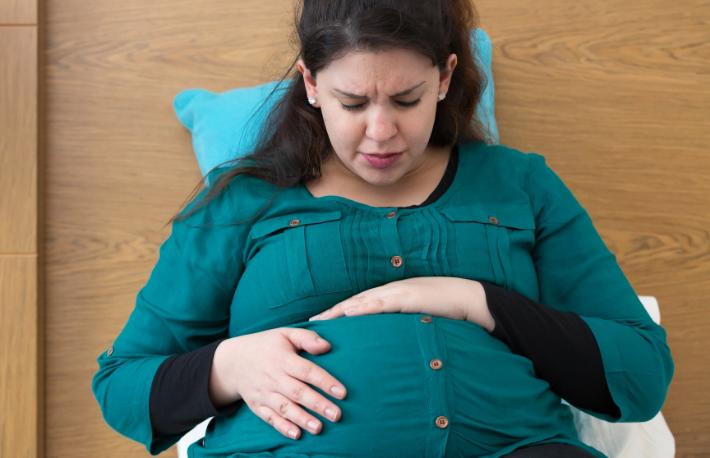
GBS Test During Pregnancy: Do It Before It’s Too Late!
Group B strep is a common bacterial infection that babies can get right during their delivery or within the first week of birth. Mothers must not take it lightly as Group B strep might be a serious complication. Therefore, a GBS test during pregnancy is conducted to conclude if the infection is present in the fetus. If the test results come positive, antibiotics can help treat the infection.
Group B strep is one of the most common causes of infections like sepsis, meningitis, and pneumonia in newborn babies. Therefore, it is suggested for mothers that they go for the GBS test within the early days of their pregnancy to minimize any risk of infection.
However, there is more to know about the GBS test during pregnancy and the risks of the infection in itself. In this article, we shall discuss every detail there is to know about this test so that you get a better understanding as to why you should get this test done as early as possible.
What Is Group B Strep?

Group B strep is a common infection, which is also known as group B Streptococcus or GBS. It is caused by a bacteria that is generally found in the vagina or rectal area of a woman. Around 25 percent of pregnant people are known to have GBS but are not aware of it since they do not experience any symptoms. GBS, in general, does not have any symptoms either. A pregnant lady with GBS might pass the bacteria to the baby at the time of vaginal delivery. Babies, older adults, or people with weak or underdeveloped immune systems are usually at a higher risk of developing group B strep.
Most newborn babies who get GBS do not really become sick. However, the bacteria might cause major, sometimes even light-threatening infections in a minor percentage of newborn babies. Doctors and healthcare providers screen for group B strep as a part of your daily prenatal care. If the test results come positive, your doctor will treat you with antibiotics.
How Common Is GBS?

The GBS test during pregnancy has luckily reduced the number of cases of GBS infection in infants. As per records, around 930 babies experience an early onset of GBS. The number of babies with late-onset GBS, on the other hand, is 1,050. About 4 percent of babies who get GBS die from it.
Group B Strep Symptoms
As we have mentioned, both infants and older adults can get the Group B strep infection if they have an underdeveloped immune system. The symptoms, therefore, may vary from children to adults.
Let’s now discuss the symptoms that you need to look out for to confirm if your baby or someone else has the Group B strep infection.
Infants
Most babies born to women carrying the group B strep bacteria are healthy. But, the very few who get infected with the bacteria at the time of labor turn out to be critically sick.
In babies, sickness caused by Group B strep can show up within six hours after birth, or weeks, and sometimes even months after birth.
The symptoms may include:
- Low body temperature
- Fever
- Sluggishness, weak muscle tone, limpness
- Difficulty feeding
- Difficulty breathing
- Irritability
- Seizures
- Jitteriness
- Jaundice
- Rash
Adults
Many adults are known to carry the Group B strep bacteria in their bodies, primarily in their vagina, bowel, throat, or rectum, and have no prominent symptoms to detect it.
In rare cases, however, Group B strep can result in a urinary tract infection or some other more serious infections. Symptoms and signs of such infections that may be caused by group B strep bacteria include the following:
Urinary Tract Infection
- A burning sensation or pain while peeing
- A persistent, strong urge to pee
- Urine that appears red, cola colored, or pink – which is a sign of blood in the urine
- Passing very frequently, and small amounts of urine
- Pelvic pain
Blood Infection
- Chills
- Fever
- Lack of alertness or confusion
Pneumonia
- Chills
- Fever
- Cough
- Shortness of breath
- Chest pain while breathing
Skin or Soft Tissue Infection
- Pain in the infected area
- Warmth, swelling, or redness in the infected area
- Lesions with pus or drainage
Joint Or Bone Infection
- Chills
- Fever
- Pain in the infected area
- Warmth, swelling, or redness in the infected area
- Stiffness or inability to use a joint or limb
When Do You Get Tested For Group B Strep?

The Centers for Disease Control and Prevention suggests proper routine screening for Group B stress in every pregnancy. Women are usually screened between 36 and 37 weeks for a GBS test during pregnancy.
During this test, your doctor with take a swap of your vagina and rectum and send it to the lab for testing.
How Can A Baby Get GBS?

There are primarily two types of Group B strep that are found in babies:
Early onset infection: Around 27 percent of babies with GBS get infected within the first week of being born. GBS infection is generally apparent within the first few hours of birth. Premature babies are usually at greater risk if they get the infection. However, most babies that get the infection are long-term.
Late-onset infection: Group B strep infection may also occur in babies within a week or three months after being born. Late onset of the infection is, however, less common and is probably to result in the death of the baby than early-onset infection.
Causes Of Group B Strep

Many healthy women carry the Group B strep bacteria in their bodies. You may either carry it in your body for a short time period, where the bacteria might just come and go, or you may have always had it.
Group B strep bacteria do not get transmitted sexually, and they do not spread through food or water either. How it actually spreads to the newborn is still unknown.
Group B strep spreads to the baby at the time of vaginal delivery. That is, only if the baby gets exposed to or swallows any of the mother’s fluids containing the Group B strep bacteria.
Risk Factors

While there is no solid reason to explain how the baby gets the GBS infection from the mother, there are certain common reasons why one might get infected with the GBS bacteria.
Infants
Infants are usually at a higher risk of developing the Group B strep disease when:
- It is a premature birth.
- The mother carries the Group B strep bacteria in her body.
- The mother breaks her water 18 hours before her delivery.
- There is a placental tissue or amniotic fluid infection in the mother.
- The mother suffers from UTI during pregnancy.
- The body temperature of the mother increases over 100.4 F at the time of labor.
- The mother had previously delivered a baby with a Group B strep infection.
Adults
Adults aged 65 or older are usually at a greater risk of contaminating the Group B strep infection. People are also at a higher risk of getting infected if they have a condition that weakens their immune system. It is also common if they have certain serious diseases like:
- HIV infection
- Diabetes
- Heart disease
- Liver disease
- Cancer or a history of cancer
GBS Test During Pregnancy: Diagnosis

If your doctor suspects you are carrying the GBS bacteria in your body, they will diagnose it in the following ways:
- They will draw samples of sterile body fluids like spinal fluid or blood. Doctors will then look into it to see if GBS bacteria grow from the sample. It might take more than a couple of days to get the test results as the bacteria takes
- Doctors may also order for an X-ray of the chest to determine if someone has the GBS disease.
The GBS bacteria might sometimes cause urinary tract infections. In that case, doctors simply draw a sample of your urine to diagnose UTIs.
Treatment Of GBS
Doctors usually prevent the further spread of the GBS infection in the newborn baby by treating the mother with antibiotics at the time of labor or delivery. The most common type of antibiotic that is used to treat group B strep is ampicillin or penicillin.

Using these drugs prevents the infection from further spreading to the baby. Treating GBS before delivery may not be as effective. The bacteria might come back right before you give birth. These antibiotics perform at their best when used at least 4 hours before delivery. Around 90 percent of infections can be prevented with this kind of treatment.
One exception regarding the timing of this treatment is when GBS gets detected in urine. In that care, oral antibiotics treatment starts right when GBS is detected. However, antibiotics still need to continue through IV at the time of labor.
Any pregnant woman who has previously given birth to a child who developed a GBS infection or someone who has a urinary tract infection during the pregnancy caused by GBS will also need treatment during labor.
Treatment In Infants
Some babies tend to get GBS infection despite the multiple tests and antibiotic treatments during labor. In that case, doctors might take the blood sample of the baby or their spinal fluid to check if the baby has the infection. If the baby tests positive, they are treated with antibiotics with the help of an IV.
Complications

There are multiple life-threatening diseases that untreated Group B strep infection might lead to. These may include:
- Inflammation of the fluid and membrane that surrounds the spinal cord and brain.
- Pneumonia.
- Infection in the bloodstream.
In case of pregnancy, here are complications that might arise from Group B strep infection:
- Infection of the amniotic fluid and placenta
- Urinary tract infection
- Infection in the membrane that lines the uterus
- Bacteremia
If you are old or suffer from any chronic health condition, the GBS bacteria might cause severe complications, including:
- Bacteremia
- Skin infection
- Pneumonia
- Urinary tract infection
- Joint and bone infections
- Infection of the valves in your heart
- Meningitis
Prevention
If you are pregnant, the American College of Obstetricians and Gynecologists suggests a GBS screening within the 36th and 37th week of pregnancy. Your doctor will take small sample of swabs from your vagina or rectum and send it to the lab for testing.

A positive result indicates the presence of Group B strep in your blood. However, that does not imply that you are sick or your baby is going to be affected. It only means that you are at a higher risk of passing down the bacteria to the baby.
To prevent the GBS from passing down to the baby during labor or delivery, your doctor will give you an IV antibiotic, typically penicillin, at the time of labor.
If you have an allergy to penicillin or any drug-related to it, they might give you vancomycin or clindamycin as an alternative option. As the effectiveness of the alternate options is not properly out there, your baby will be under constant monitoring for approximately 48 hours.
Taking oral antibiotics in the middle of your pregnancy might not be of a lot of help. The bacteria might just return right before labor begins.
Antibiotic treatment at the time of labor is suggested if you:
- Delivered a baby previously with Group B strep infection
- Have a urinary tract infection
- Get a fever during labor
- Have not delivered the baby within 18 hours of the water breaking
- Go into labor before 37 weeks and have not tested for the Group B strep bacteria
The Bottom Line
GBS test during pregnancy is just like any other prenatal test that ensures the good health of your baby. While the results of this test are a bit more serious than the others, try not to panic if your reports do come out as positive.
Just because you are positive does not mean your growing baby is positive, too. A positive report only means that you are at the risk of passing it down to the child at the time of delivery or during labor.
In case your reports are positive, your doctors will treat you with antibiotics. These medications are only affective at the time of delivery. If you take the medicines during your mid-pregnancy, there is a high chance for the bacteria to come back at the time of labor.
Speaking of vaccines, they are not yet available. But researchers are still working on a Group B strep vaccine that could prevent any Group B strep infections in the near future.
RECOMMENDED READING:
Already have an account?
Sign In
Create your account
User added successfully. Log in








